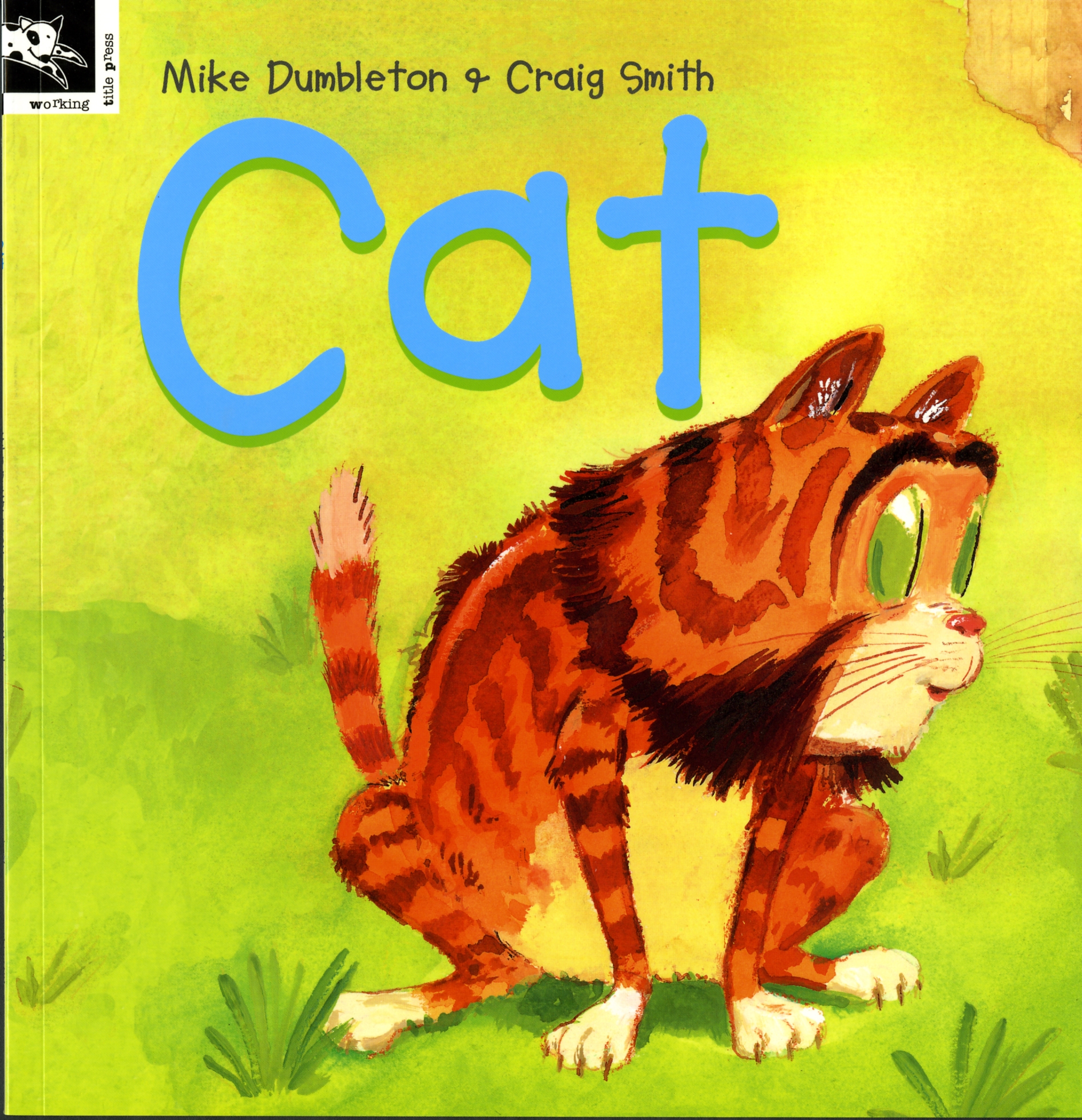This term the Prep teachers and I wanted to really focus on visual literacy skills and hands-on activities to get the Prep students actively looking for meaning within the illustrations of the books we read. Visual literacy skills are so important in this world of screen media and magazine advertorials, and picture book storytime is a fantastic opportunity to explore and develop these understandings with children.
Last week we used the two ebooks hosted on the Little Big Book Club site to explore stories on the iwb. The book Cat by Mike Dumbleton and Craig Smith was particularly good for this activity – the endpapers of the book present a birds-eye view of three suburban backyards, typical of any older town in Australia. Asking the children to name the things they could see gave them a list of the characters and objects they could expect to find in the story: a cat, a dog, grass, fences, a ladder, trees, a bird, people, a hose. This was particularly important for our students as Hong Kong is a city of medium to high-rise concrete apartment blocks, where even balconies are highly unusual, so items such as the sprinkler on the end of the hose, or the Hills Hoist clothesline, would be strange to many of our students.
Reading the story together there were many opportunities for the children to interpret the pictures, especially since the text in this book is both minimal and very repetitive! We invited the children to explain what had happened every time the cat or another character said “Thank goodness for that!” – for instance they needed to put into words that the cat ran up the tree to escape from the dog.
We did not provide a paper-based activity with Cat, but instead relied on having the children read the text as a chorus, and discuss the meaning of the illustrations. Also, this being an ebook, there was the added bonus of built-in sound-effects – by hovering the cursor over parts of most pictures we discovered that we could play the sounds of the different animals and events in the story, prompting lots of barking and meowing noises from the children!
Now lets talk about finger puppets !
!
This week we read a different book, coincidentally about another cat: Mr Muggs the Library Cat, by Dave Gunson. This book lent itself to discussing perspective, particularly the second double-page spread where the viewer is floating high up in the rafters, looking down into the Library. The rats sitting on the rafters look very big and the people down below look small, so this prompted the children to comment on their size and use explanations such as ‘things that are close look big, and things that are far away look small’.
On another page the story talks about the cat wanting to stay in the nice warm Library, but our view is of the street outside, where it is dark, raining and windy – the children have to interpret the angle of the rain across the page, and the way that people are clutching coats and umbrellas to understand that it is cold and windy, giving us the reason why it is a good idea to stay inside where it is warmer.
When we finished reading this story I handed out small pieces of paper and asked the children to draw Mr Muggs on one piece, and Pablo his rat friend on the other so that everyone could make finger puppets. Next week the children will be able to retell a bit of the story, or make up a new conversation between Mr Muggs and Pablo, using their finger puppets. I think that this simplest of activities is going to prove highly engaging for all of our students – this is important as for many of them English is their second language, so giving them opportunities to re-enact parts of the story is a way to enrich their vocabulary and develop their confidence.
Other plans this term include:
- making predictions about what will happen next, and splitting the story over two weeks to keep the suspense level high;
- comparing two wildly different characters, such as in the book Pearl Barley and Charlie Parsley
- creating a visual Character Map, where the children add words and pictures around a drawing of the main character to show what that person likes, dislikes, does, looks like etc.
We don’t have any particular genre or theme planned, just wonderful books that lend themselves to these activities.
It promises to be a fun term with Prep Library, full of creativity and rich thinking!
All images sourced from the publishers’ websites wherever possible, or from a bookseller. These images are copyrighted by the original illustrators, and are used under the Educational Fair Dealing clause of the Copyright Act 1968 – used for the purpose of education and review. As an Australian teacher working in an Australian school I abide by the Australian laws regarding copyright.







